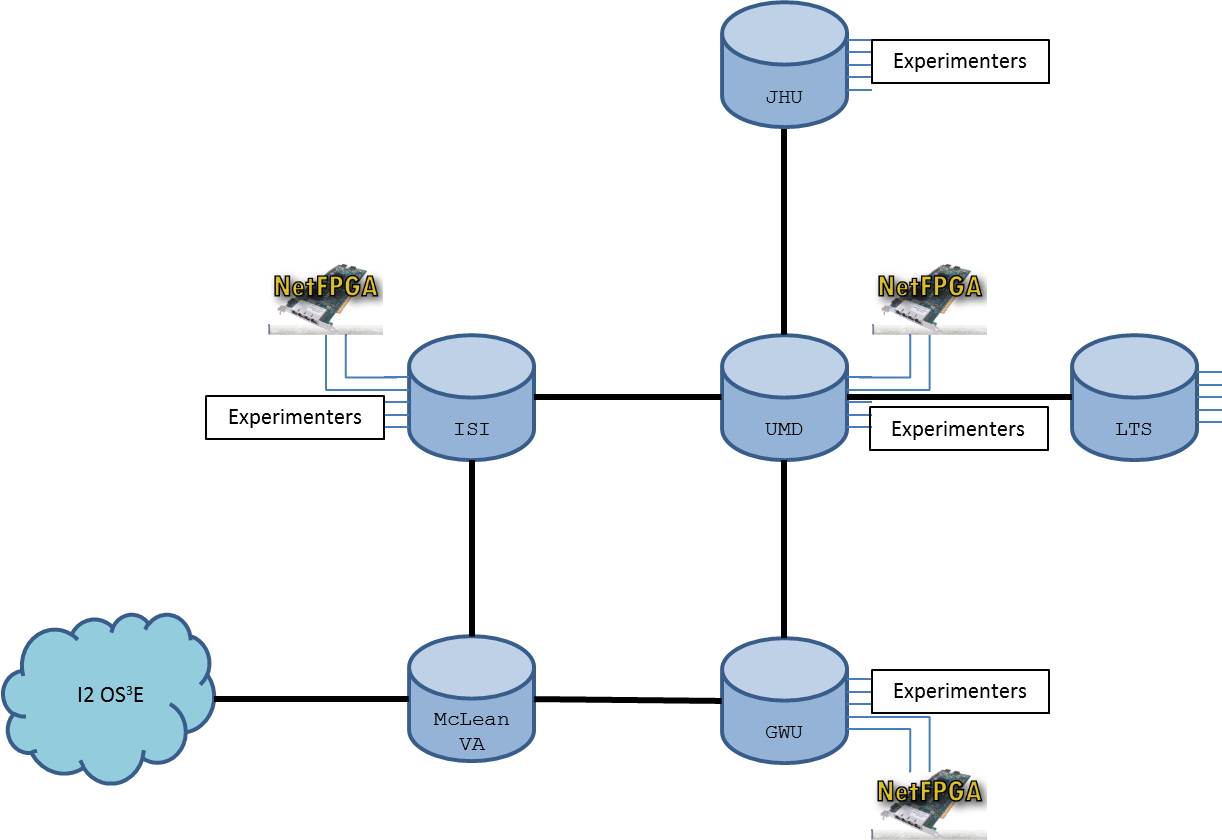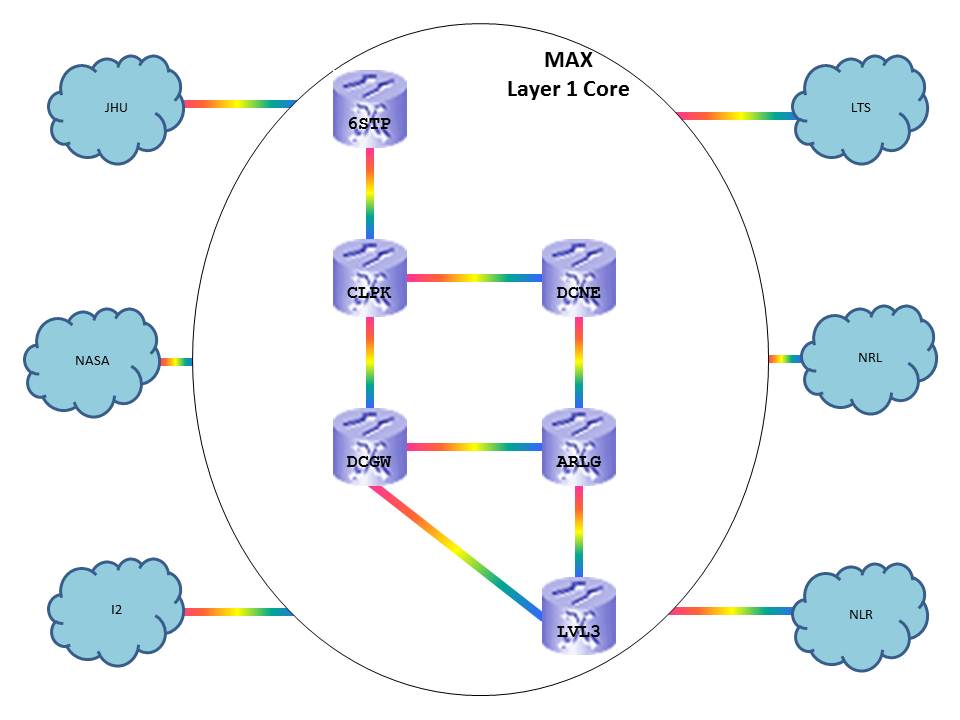Layer 1
Layer 1 Core
MAX upgraded its core optical research infrastructure by deploying a six-node DWDM mesh network based on the Fujitsu Flashwave 9500 platform. This new network deployment has several interesting capabilities and feature sets which would be of great value to researchers including:
- 100 Gb/s per lambda transport waves (Ethernet, OTU4 client access ports)
- 44 lambdas per physical fiber capability
- True all-optical ROADM (Reconfigurable Optical Add-Drop Multiplexer) switched infrastructure
- 10 Gb/s Multi-Technology (Ethernet, SONET, OTN) client access ports
- Advanced control plane features for path computation, cross-connect establishment, dynamic dissemination of topology information, and virtualization of resources.
- Transponders with tunable wavelength capabilities
- Ability to accept true all-optical hand-off from clients or other networks. This is often referred to as “alien waves”, and means that there is no optical-electrical-optical conversion at the network demarcation point
- 50 ms protection switching capability
Layer 2
OpenFlow
Our OpenFlow proposal was awarded and six OpenFlow switches will be made available on the MAX research network. OpenFlow is a communications protocol that gives access to the forwarding plane of a switch or router over the network. OpenFlow allows the path of network packets through the network of switches to be determined by software running on a separate server. This separation of the control from the forwarding allows for more sophisticated traffic management than feasible today using ACLs and routing protocols.
OpenFlow allows researchers to run experimental protocols in the networks they use every day. OpenFlow is based on a traditional Ethernet switch, with an internal flow-table, and a standardized interface to add and remove flow entries. OpenFlow enables Software Defined Networking. OpenFlow allows researchers to run experiments on heterogeneous switches in a uniform way at line-rate and with high port-density, while vendors do not need to expose the internal workings of their switches. OpenFlow allows researchers to evaluate their own ideas in real-world traffic settings.
MAX OpenFlow Deployment:

Click image to view larger

